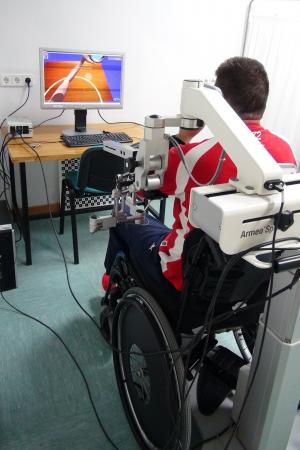The HYPER research project, with a budget of 5 million euros and the participation of the IK4 R&D Alliance under the coordination of the Spanish National Scientific Research Council (CSIC), has been running since 2010 and has led to the development of systems that facilitate new rehabilitation therapies and ways to compensate for gait in patients who have had spinal cord injuries or cerebral strokes.
Various prototypes have been developed and one of them is undergoing a preliminary clinical validation process with 10 patients with spinal cord injuries at the National Hospital for Paraplegics in Toledo.
The HYPER prototype
A new rehabilitation prototype is based on the use of an exoskeleton that monitors arm movements, makes a high-precision appraisal of the patient’s posture in real time and uses virtual reality to recreate everyday life situations.

The main advantage of these tools lies in the fact that they will allow the rehabilitation processes to start earlier, are conducted more intensively and in a way that is more pleasant for the patient, and they contribute towards faster, more complete recovery. The systems designed also facilitate a quantitative analysis of the progress the patients make, which will be very useful in the clinical evaluation by the professionals working in the rehabilitation process.
“It has been possible to meet this challenge through the work of a multidisciplinary team with technical as well as clinical researchers from national centres of excellence," said Eduardo Carrasco, head of the project at IK4.
One of the main challenges they will be facing in the future is “to validate the therapies developed in clinical trials with broad populations of patients and to make use of these solutions commercially,” he added.





Comments